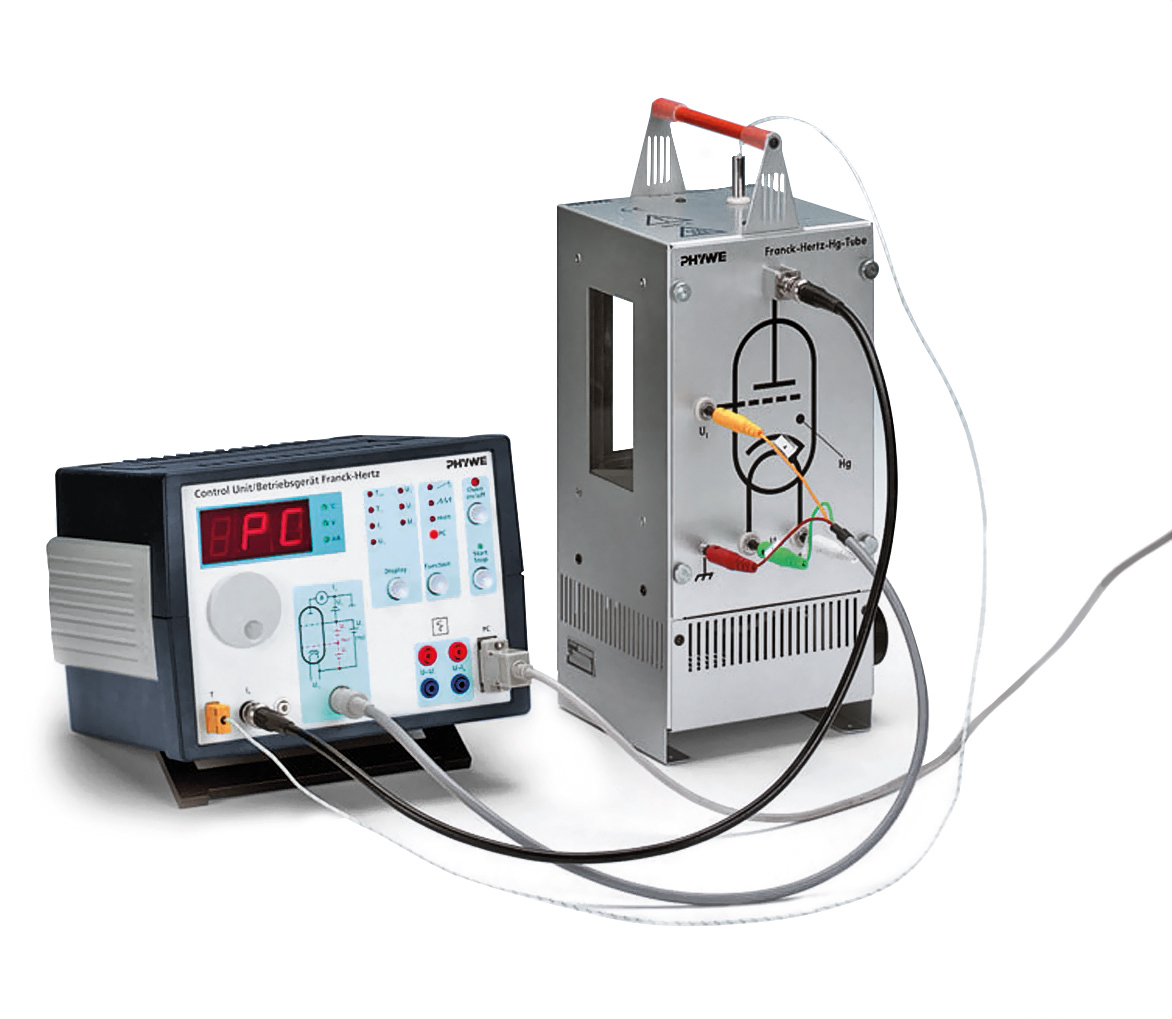Principle
Electrons are accelerated in a tube filled with mercury vapour. The excitation energy of mercury is determined from the distance between the equidistant minima of the electron current in a variable opposing electric field.
Benefits
- Experience the essence of the Nobel Price: Franck, Hertz (1925)
- Classical Version with Mercury (Hg)
- One operating unit for 2 experiments (Hg, Ne)
- Precise determination of electron excitation energy of Hg
- Direct connection to computer, no extra interface necessary
Tasks
- To record the countercurrent strength Ι in a Franck-Hertz tube as a function of the anode voltage U.
- To determine the excitation energy E from the positions of the current strength minima or maxima by difference formation.
Learning objectives
- Energy quantum
- Electron collision
- Excitation energy
Customers were also interested in...
- Article no:P2510315Franck-Hertz experiment with a Ne-Tube

